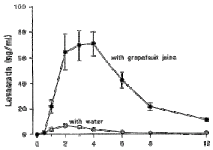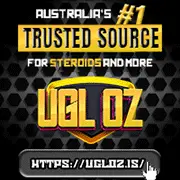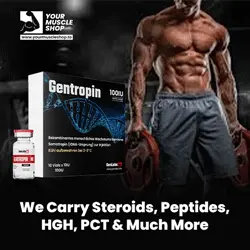A glass of grapefruit juice makes methandienone more effective
Achieve the same results by taking less methandienone? With ordinary grapefruit juice its possible. At least, you can read this into a review article published by Israeli pharmacologists in the European Journal of Clinical Nutrition.
*
The Israelis' article is about the relationship between grapefruit and medicines. Scientists came across this at the end of the 1980s when doing experiments with strong-tasting substances. To make the comparison with the placebo group as true-to-life as possible, the researchers added a grapefruit taste to the preparations. Suddenly the levels of medicines being tested were much higher than you’d expect.
Later on it became clear that grapefruit inhibits the enzyme CYP3A4. This enzyme is responsible for breaking down substances in a process that scientists call 6-beta-hydroxylation. Medicines that are sensitive to this enzymatic process disappear quickly out of the body.
And still later scientists discovered that grapefruit only inhibits CYP3A4 in the small intestine. The enzyme is also found in the liver, but grapefruit does not affect it there. Less CYP3A4 in the small intestine therefore means that a large group of substances is more easily absorbed by the body.
Since then another protein has been found that is inhibited by grapefruit: P-glycoprotein or P-gp. P-gp is also found in the small intestine and also decreases the absorption of pharmacological substances.
The figure below shows what the effect can be. The graph shows the concentration of the medicine lovastatine broken down by CYP3A4 after drinking an amount of water – or an amount of grapefruit juice.
You reach maximum effect, the researchers say, after drinking a 250 ml glass of grapefruit juice. Four hours after intake, 47 percent of the enzyme has been deactivated. Twelve hours after drinking the juice, the effect was still pretty optimal. Twenty four hours afterwards, a third of the effect still remains.
It is not know which graperfruit compounds cause the effect. The old theory was that it was the work of naringin and its metabolite naringenin. Laboratory tests do not confirm this though. Another theory is that the furanocourmarin bergamottin – the flavouring in Early Grey tea – and its metabolite 6',7'-dihydroxybergamottin cause the inhibition, but in laboratory tests the effect was only slight. There are probably several phytochemicals at play, all of which contribute to the effect.
For the researchers, one of the conclusions of their study is that users of CYP3A4-sensitive medicines are better off avoiding grapefruit juice and the whole fruit. The dosages for these medicines are not based on improved bioavailabililty by grapefruit, and if this happens the users may experience more negative side-effects.
In the future, the Israelis add, once the grapefruit-effect is better understood, it may be possible to add the active ingredients to medicines so that dosages, and manufacturers' production costs, can be lowered.
Methandienone
Halotestin
Turinabol
The relevance of this publication for chemical athletes is that certain oral anabolic steroids are also broken down by CYP3A4. In the mid nineties doping hunter Wilhelm Schaenzer published a study on beta-hydroxylation of testosterone, boldenone, methyl testosterone, halotestin, methandienone and turinabol, which had been administered orally to the test subjects.
Schaenzer examined the metabolites in the urine of his human test subjects. He discovered that the 6-beta-hydroxylation of boldenone, testosterone and methyl testosterone was negligible, but was important for the breakdown of turinabol, methandienone and halotestin. Between 17 and 46 percent of these hormones leave the body in the 6-beta-hydroxylated form.
Source:*
Eur J Clin Nutr. 2004 Jan; 58(1): 1-9.
Steroids. 1995 Apr; 60(4): 353-66.


Achieve the same results by taking less methandienone? With ordinary grapefruit juice its possible. At least, you can read this into a review article published by Israeli pharmacologists in the European Journal of Clinical Nutrition.
*
The Israelis' article is about the relationship between grapefruit and medicines. Scientists came across this at the end of the 1980s when doing experiments with strong-tasting substances. To make the comparison with the placebo group as true-to-life as possible, the researchers added a grapefruit taste to the preparations. Suddenly the levels of medicines being tested were much higher than you’d expect.
Later on it became clear that grapefruit inhibits the enzyme CYP3A4. This enzyme is responsible for breaking down substances in a process that scientists call 6-beta-hydroxylation. Medicines that are sensitive to this enzymatic process disappear quickly out of the body.
And still later scientists discovered that grapefruit only inhibits CYP3A4 in the small intestine. The enzyme is also found in the liver, but grapefruit does not affect it there. Less CYP3A4 in the small intestine therefore means that a large group of substances is more easily absorbed by the body.
Since then another protein has been found that is inhibited by grapefruit: P-glycoprotein or P-gp. P-gp is also found in the small intestine and also decreases the absorption of pharmacological substances.
The figure below shows what the effect can be. The graph shows the concentration of the medicine lovastatine broken down by CYP3A4 after drinking an amount of water – or an amount of grapefruit juice.
You reach maximum effect, the researchers say, after drinking a 250 ml glass of grapefruit juice. Four hours after intake, 47 percent of the enzyme has been deactivated. Twelve hours after drinking the juice, the effect was still pretty optimal. Twenty four hours afterwards, a third of the effect still remains.
It is not know which graperfruit compounds cause the effect. The old theory was that it was the work of naringin and its metabolite naringenin. Laboratory tests do not confirm this though. Another theory is that the furanocourmarin bergamottin – the flavouring in Early Grey tea – and its metabolite 6',7'-dihydroxybergamottin cause the inhibition, but in laboratory tests the effect was only slight. There are probably several phytochemicals at play, all of which contribute to the effect.
For the researchers, one of the conclusions of their study is that users of CYP3A4-sensitive medicines are better off avoiding grapefruit juice and the whole fruit. The dosages for these medicines are not based on improved bioavailabililty by grapefruit, and if this happens the users may experience more negative side-effects.
In the future, the Israelis add, once the grapefruit-effect is better understood, it may be possible to add the active ingredients to medicines so that dosages, and manufacturers' production costs, can be lowered.
Methandienone
Halotestin
Turinabol
The relevance of this publication for chemical athletes is that certain oral anabolic steroids are also broken down by CYP3A4. In the mid nineties doping hunter Wilhelm Schaenzer published a study on beta-hydroxylation of testosterone, boldenone, methyl testosterone, halotestin, methandienone and turinabol, which had been administered orally to the test subjects.
Schaenzer examined the metabolites in the urine of his human test subjects. He discovered that the 6-beta-hydroxylation of boldenone, testosterone and methyl testosterone was negligible, but was important for the breakdown of turinabol, methandienone and halotestin. Between 17 and 46 percent of these hormones leave the body in the 6-beta-hydroxylated form.
Source:*
Eur J Clin Nutr. 2004 Jan; 58(1): 1-9.
Steroids. 1995 Apr; 60(4): 353-66.











